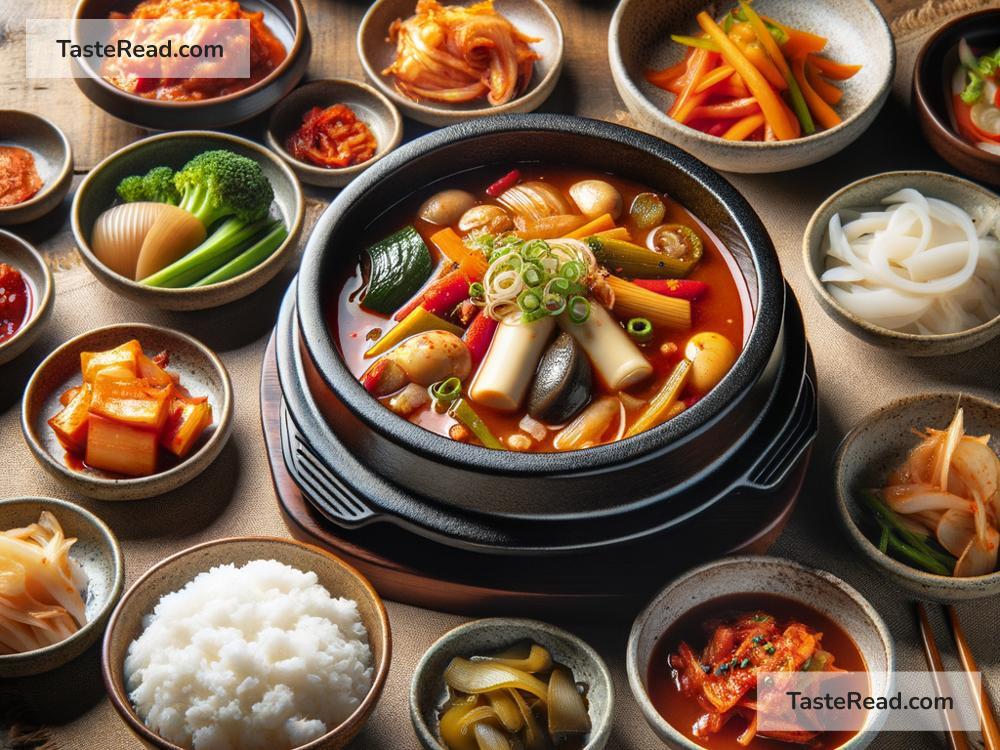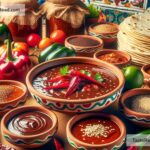Journeying Through Flavorful Korean Sundubu Jjigae Experiences
Korean food is famous all around the world for its vibrant flavors, healthy ingredients, and comforting dishes. One dish that stands out among the many tasty options is Sundubu Jjigae, also known as soft tofu stew. This bubbling, hearty soup is a favorite for its rich flavors, warming qualities, and versatility. If you’ve never tried Sundubu Jjigae, get ready to discover why this dish might become one of your go-to comfort foods.
What is Sundubu Jjigae?
Let’s begin by breaking down the name. “Sundubu” means “soft tofu” in Korean, and “jjigae” translates to “stew.” Together, Sundubu Jjigae means “soft tofu stew.” This dish is made with silky, unpressed tofu, which is much softer than the firm tofu you often see in grocery stores. The tofu is cooked in a flavorful broth, along with various ingredients like vegetables, meat, seafood, and seasonings.
Sundubu Jjigae is typically spicy, thanks to gochugaru (Korean red chili flakes) or gochujang (Korean chili paste). But don’t worry if you’re not a fan of heat—this stew can be adjusted to fit your taste. While it’s common to serve Sundubu Jjigae steaming hot and spicy, you can ask for a milder version or even make it at home to control the level of spice.
A Bowl Full of Comfort
What makes Sundubu Jjigae so unique is its balance of textures and flavors. The tofu is so soft it almost melts in your mouth, while the spicy broth wakes up your taste buds with bold, savory notes. Some versions of the soup also include an egg, which is cracked into the stew while it’s boiling, adding a delicious creaminess.
This dish isn’t just tasty—it’s comforting. Imagine sitting in front of a sizzling hot pot of Sundubu Jjigae on a cold winter day. The warmth of the stew spreads through your body, while the rich aroma fills the air. The experience feels like a hug in food form.
Versatility in Ingredients
One of the best things about Sundubu Jjigae is that it can be made with various ingredients. This flexibility means the dish can suit many preferences, whether you’re a meat lover, seafood enthusiast, or vegetarian.
For a classic version, pork or beef is often added for flavor. Seafood lovers can enjoy Sundubu Jjigae with shrimp, clams, or mussels, which give the stew a fresh, ocean-like taste. Vegetarians can include mushrooms, zucchini, and other vegetables for a plant-based version. Whatever the ingredients, the soft tofu remains the star, providing a creamy texture that ties everything together.
The Secret to Sundubu Jjigae’s Flavor
The base of Sundubu Jjigae’s flavor lies in its broth. The soup often starts with anchovy stock or a simple vegetable broth, which is then enhanced with seasonings like soy sauce, garlic, and sesame oil. The addition of gochugaru or gochujang brings a deep, smoky heat, giving the stew its signature kick.
Another flavor booster is doenjang (fermented soybean paste), a traditional Korean ingredient that adds richness and depth. Some recipes may also include kimchi, which gives the stew a tangy, spicy twist. Each ingredient works together to create a harmony of flavors that will leave you craving another bowl.
Dining Out: A Korean Sundubu Jjigae Experience
In many Korean restaurants, Sundubu Jjigae is served in a dolsot, or hot stone pot. The stew arrives boiling and bubbling, creating a dramatic presentation that instantly grabs your attention. Alongside the stew, you’ll often receive a bowl of steamed rice and several side dishes called banchan. These small side dishes might include kimchi, pickled vegetables, or marinated seaweed, providing extra bursts of flavor to your meal.
When eating Sundubu Jjigae at a restaurant, you can expect a communal dining experience. Korean food is all about sharing, so you’ll often see people enjoying this hearty stew together with family or friends. It’s a chance not only to enjoy great food but also to connect with others over a warm and satisfying meal.
Making Sundubu Jjigae at Home
If you can’t make it to a Korean restaurant, don’t worry—you can create Sundubu Jjigae in your own kitchen. Making this dish at home is simpler than it sounds, and you can customize the ingredients however you like.
First, you’ll need soft tofu, which you can find in the refrigerated section of most Asian grocery stores. Next, gather your choice of protein (like pork, beef, or seafood) and vegetables. For flavor, stock up on Korean staples like gochugaru, gochujang, and sesame oil. You’ll also need a pot—if you have a stone pot, that’s perfect, but any small, deep pot will do.
After sautéing garlic and your chosen protein, add the broth, seasonings, and veggies. Gently add the soft tofu last, being careful not to break it apart too much. Let everything simmer together until the flavors meld, then crack an egg on top just before serving. Pair the stew with rice, and enjoy your homemade Sundubu Jjigae experience.
A Taste of Korea in Every Bowl
Sundubu Jjigae is more than just a dish—it’s an experience. From its bubbling, spicy presentation to its deep, comforting flavors, this stew captures the heart of Korean cuisine. Whether you’re dining at a restaurant or cooking it at home, Sundubu Jjigae invites you to explore a world of taste and warmth.
So, next time you’re craving something flavorful and satisfying, give Sundubu Jjigae a try. You’ll not only enjoy a delicious meal but also take a flavorful journey into the heart of Korean culture—one spoonful at a time. Don’t forget to share this experience with your loved ones—it’s even better when enjoyed together!


